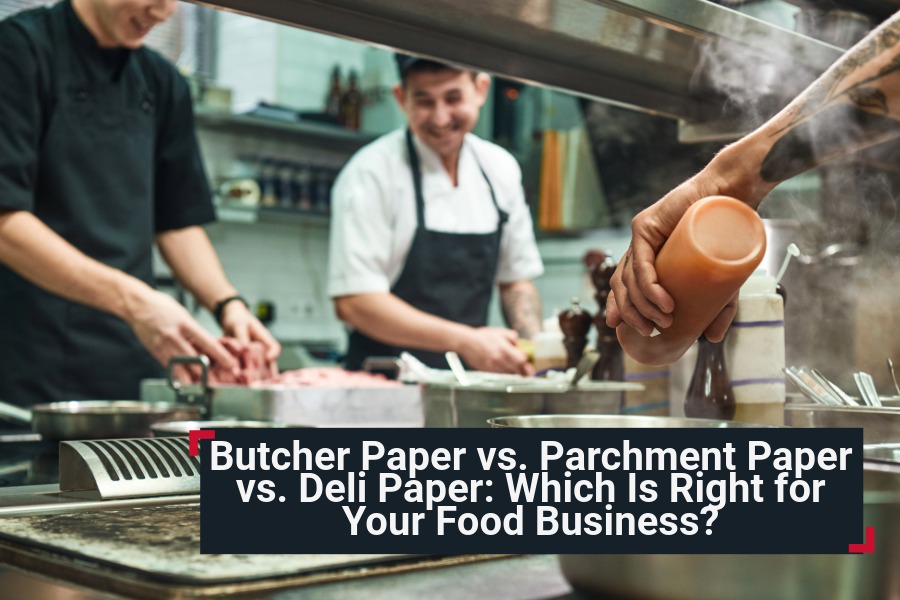If you are sourcing paper products for your restaurant, café, or foodservice operation, you will quickly see a few terms repeated: butcher paper, parchment paper, and deli paper (sometimes called food sheets, basket liners, or sandwich wrap). They can look similar at first glance, but they perform differently, and choosing the right one can improve food presentation, simplify service, and support your brand.
This guide explains how these three paper types compare, where each excels, and how to decide which is best for your menu and customers.
What Is Butcher Paper?
Butcher paper is a thick, sturdy paper originally designed to wrap and protect fresh meat. Over time, restaurants and markets have embraced it for its durability and rustic, versatile look.
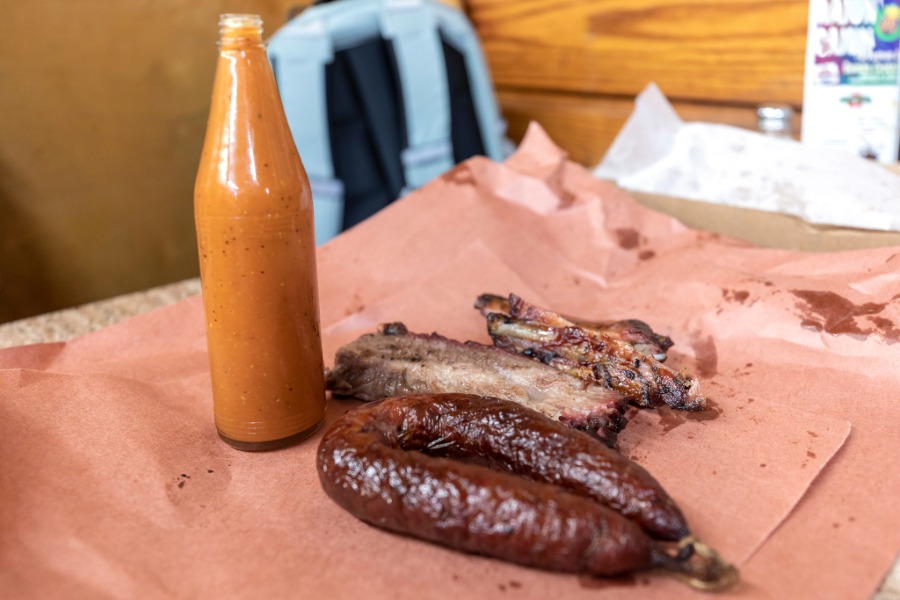
In the Kitchen
Butcher paper is often used to wrap smoked meats, barbecue items, and large cuts of meat because it is breathable yet strong. Many casual eateries and sandwich shops also use it for hearty sandwiches or as tray liners.
Outside the Kitchen
It is equally practical for packaging and presentation. Butcher paper is easy to print or stamp, making it popular for businesses that want a custom-branded look without sacrificing strength.
Types of Butcher Paper
- Pink or Peach Butcher Paper: Breathable and resistant to moisture; a favorite for barbecue and smoked meats.
- White Butcher Paper: Clean, bright, and professional for delis, seafood, or sandwiches.
- Poly-Coated Butcher Paper: Adds a light moisture barrier for foods with higher grease or juices.
What Is Parchment Paper?
Parchment paper is a cellulose-based paper coated with silicone to create a non-stick, heat-resistant surface. It is mostly used in baking rather than direct food packaging or customer presentation.
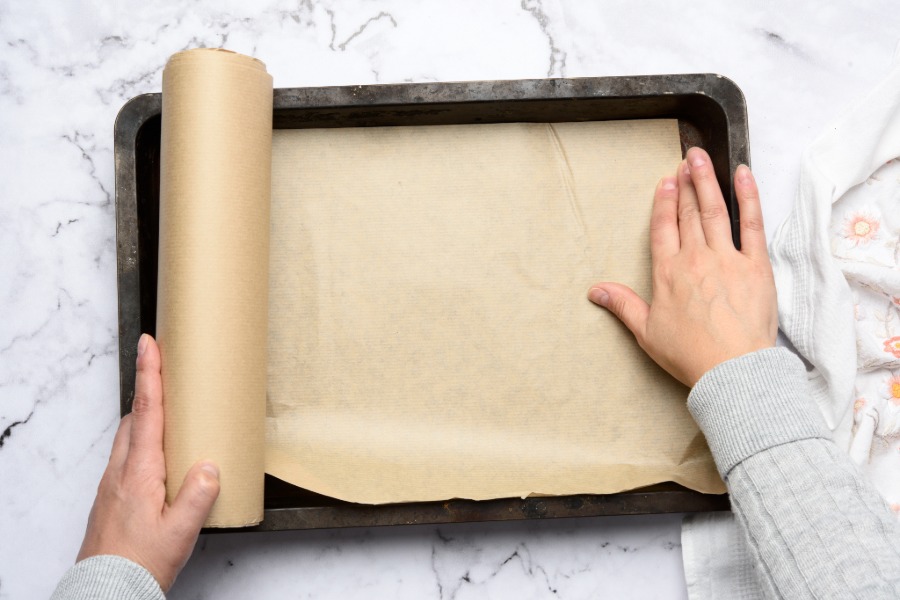
In the Kitchen
Because parchment paper withstands high temperatures and prevents sticking, it is ideal for lining baking sheets, wrapping fish or vegetables for cooking, and keeping pastries from sticking to pans.
Outside the Kitchen
While technically you could wrap food in parchment paper, it is not the most common choice for serving or takeout. Its smooth, non-stick coating makes it less absorbent and harder to customize with branding.
What Is Deli Paper?
Deli paper, also called food sheets, basket liners, or sandwich wrap, is one of the most versatile and widely used papers in quick-service and casual dining.
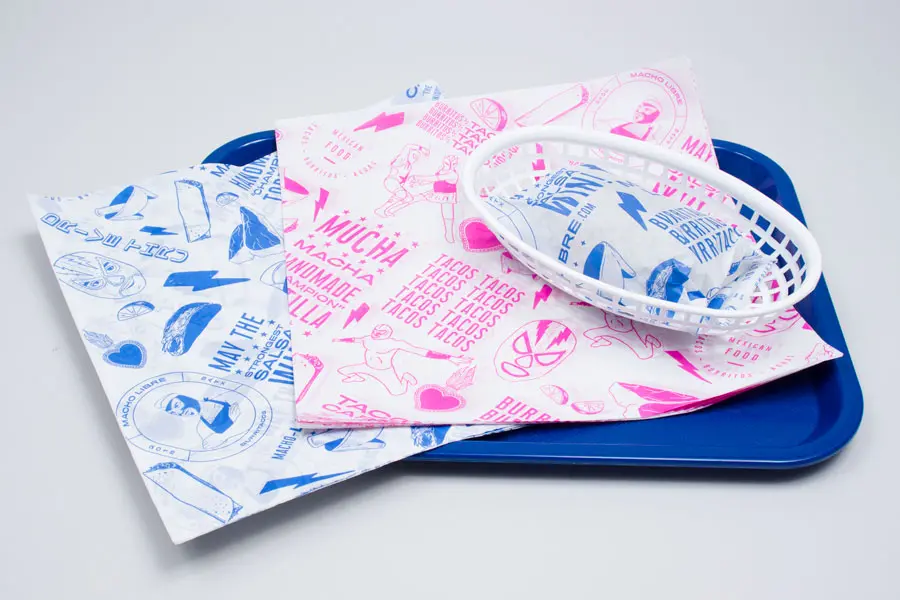
In the Kitchen
It is perfect for wrapping burgers, sandwiches, and wraps or layering between baked goods. Deli paper is typically thinner than butcher paper but still grease-resistant and practical.
Outside the Kitchen
Pre-cut sizes make deli paper easy for fast service. It is also great for lining baskets, trays, and to-go containers, helping keep grease and moisture contained while making food look fresh and appealing.
Common Styles of Deli Paper
- Plain White or Kraft Sheets: Simple, clean look for everyday use.
- Printed or Branded Sheets: Add logos or patterns to boost brand visibility and create a polished presentation.
- Grease-Resistant Sheets: Designed for fried foods or juicy menu items.
Learn more about custom foodservice tissue paper wraps & tray liners.
Butcher Paper vs. Parchment Paper vs. Deli Paper: Side-by-Side Comparison
| Feature | Butcher Paper | Parchment Paper | Deli Paper |
|---|---|---|---|
| Heat Resistance | Moderate (not for baking) | High (oven safe, non stick) | Low to moderate |
| Grease & Moisture | Absorbent | Resistant | Grease resistant |
| Branding Potential | Excellent (easy to print or stamp) | Limited | Excellent (pre cut + custom printed) |
| Best For | Smoked meats, sandwiches, tray lining | Baking pastries and cooking prep | Burgers, sandwiches, fried foods, trays |
| Look & Feel | Rustic, sturdy, natural | Smooth, non stick, neutral | Clean, functional, or fully branded |
Eco-Friendly Considerations
- Butcher Paper: Often recyclable if uncoated and made from responsibly sourced paper.
- Deli Paper: Many options are recyclable or compostable; grease-resistant coatings may affect this, so check product details.
- Parchment Paper: Some compostable versions exist, but it is less common in foodservice packaging overall.
If sustainability matters to your business, branded butcher paper or deli paper can be produced with eco-conscious materials without losing performance. See sustainable custom options here.
How to Choose the Right Paper
- For smoked meats and barbecue: Butcher paper’s breathability and strength make it ideal.
- For fast casual sandwiches and fried food: Deli paper or basket liners are affordable, efficient, and easy to brand.
- For baking and prep work: Parchment paper belongs in the kitchen, but most businesses switch to deli or butcher paper for serving and packaging.
Think about how the paper will interact with your menu: grease level, moisture, and presentation goals all influence the right choice.
Branding Matters
Both butcher paper and deli paper are excellent canvases for your logo, colors, or messaging. These details reinforce your brand, create a professional feel, and turn every meal into a marketing opportunity.
Explore custom printed wraps and liners from Morgan Chaney to elevate your presentation.
Wrapping It Up
While parchment paper is a kitchen essential for baking and prep, it is not the go-to for customer-facing food packaging. For most restaurants and cafés, butcher paper and deli paper deliver the right mix of practicality, presentation, and brand impact.
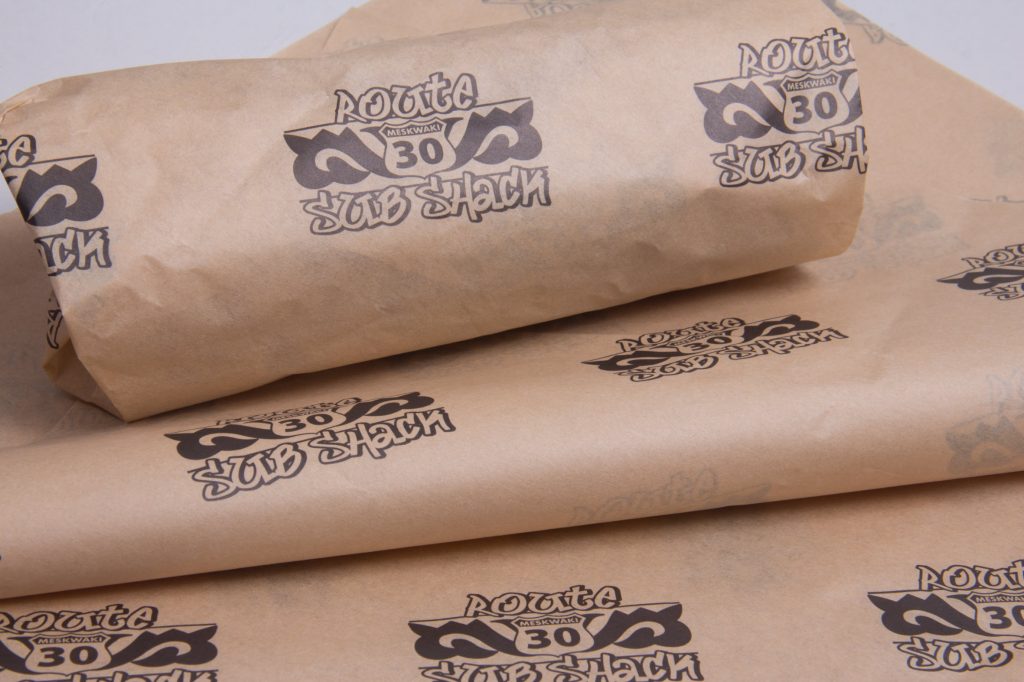
By understanding how each paper performs, you can make smarter purchasing decisions, keep food looking great, and give customers a memorable experience.
